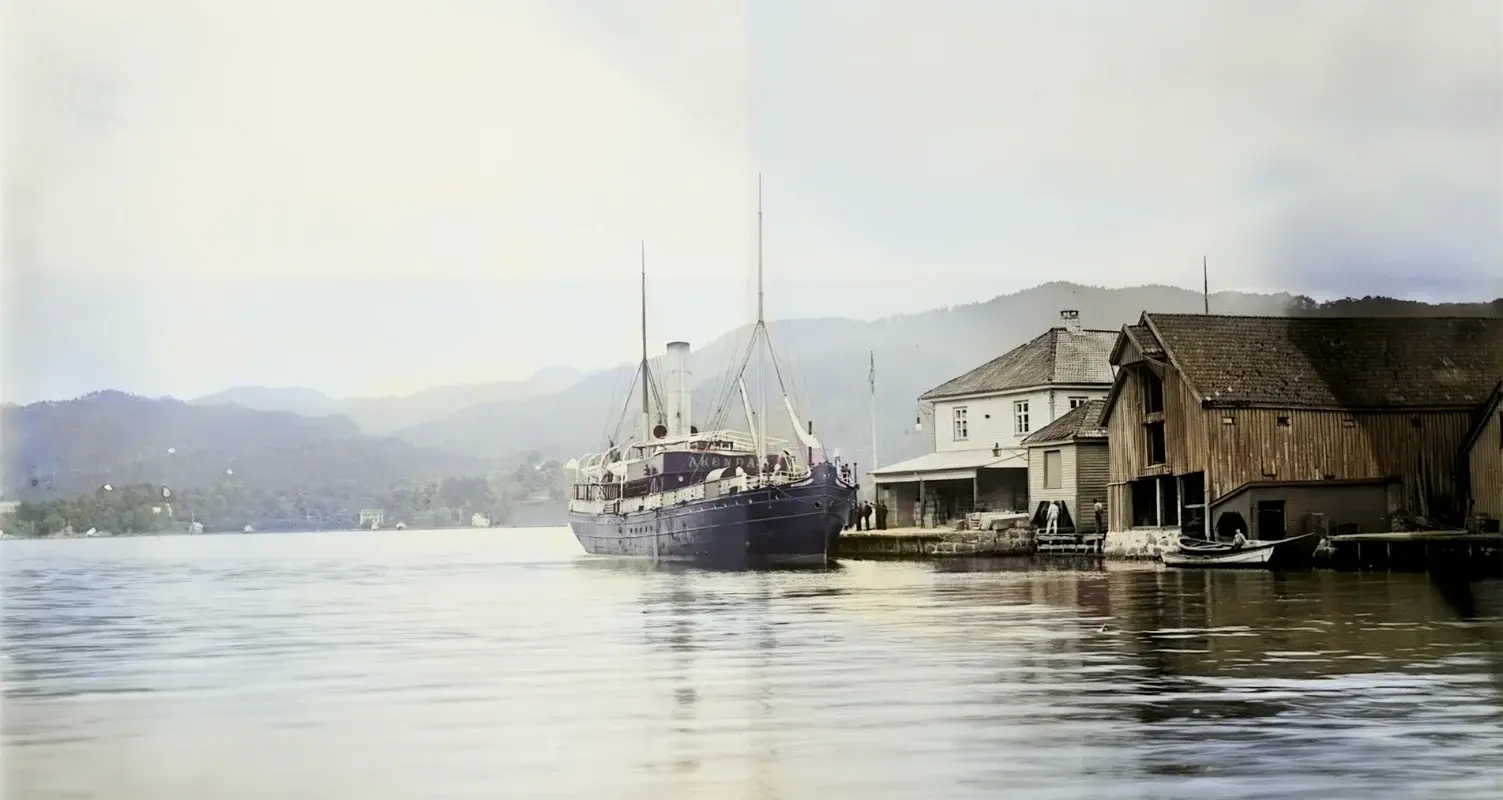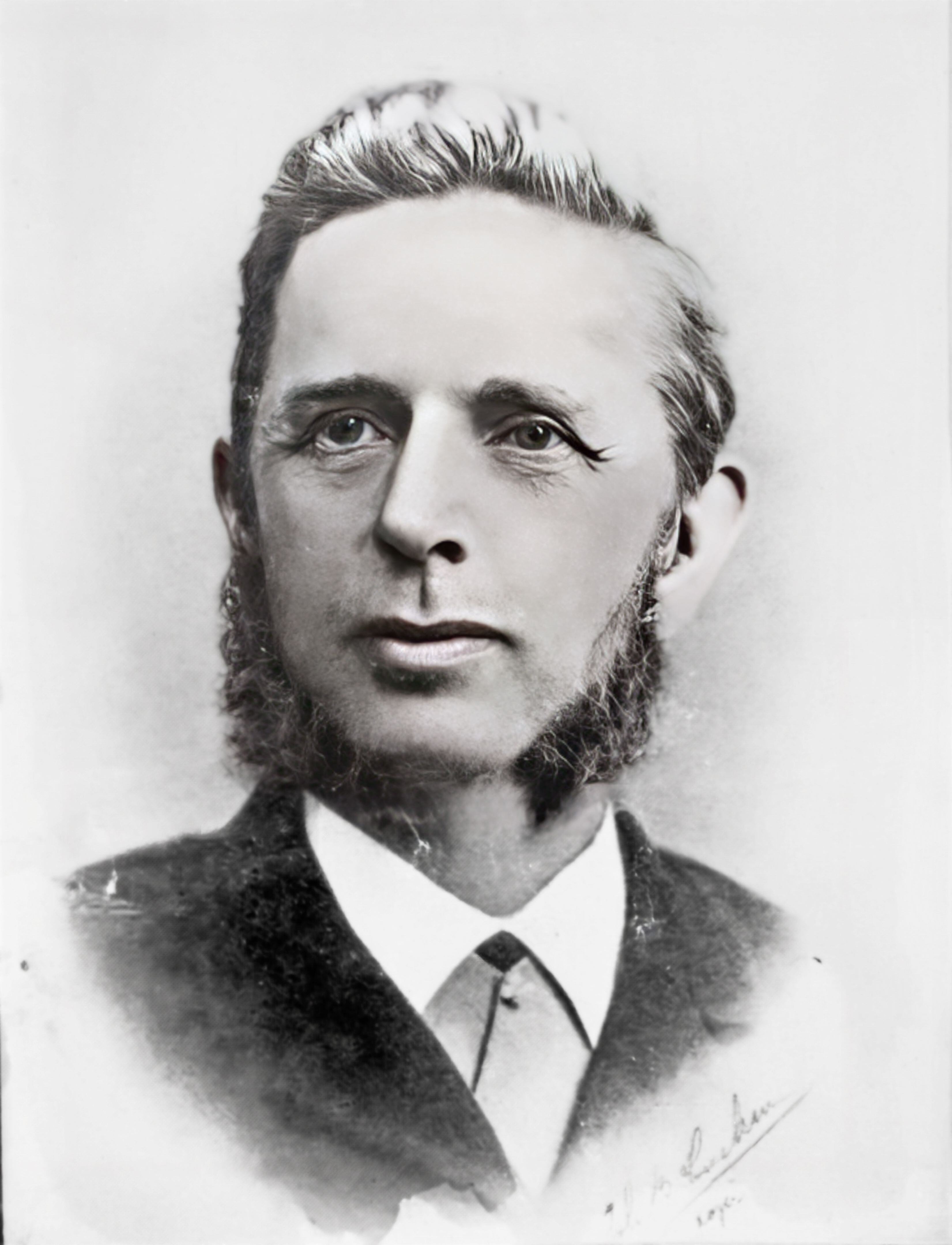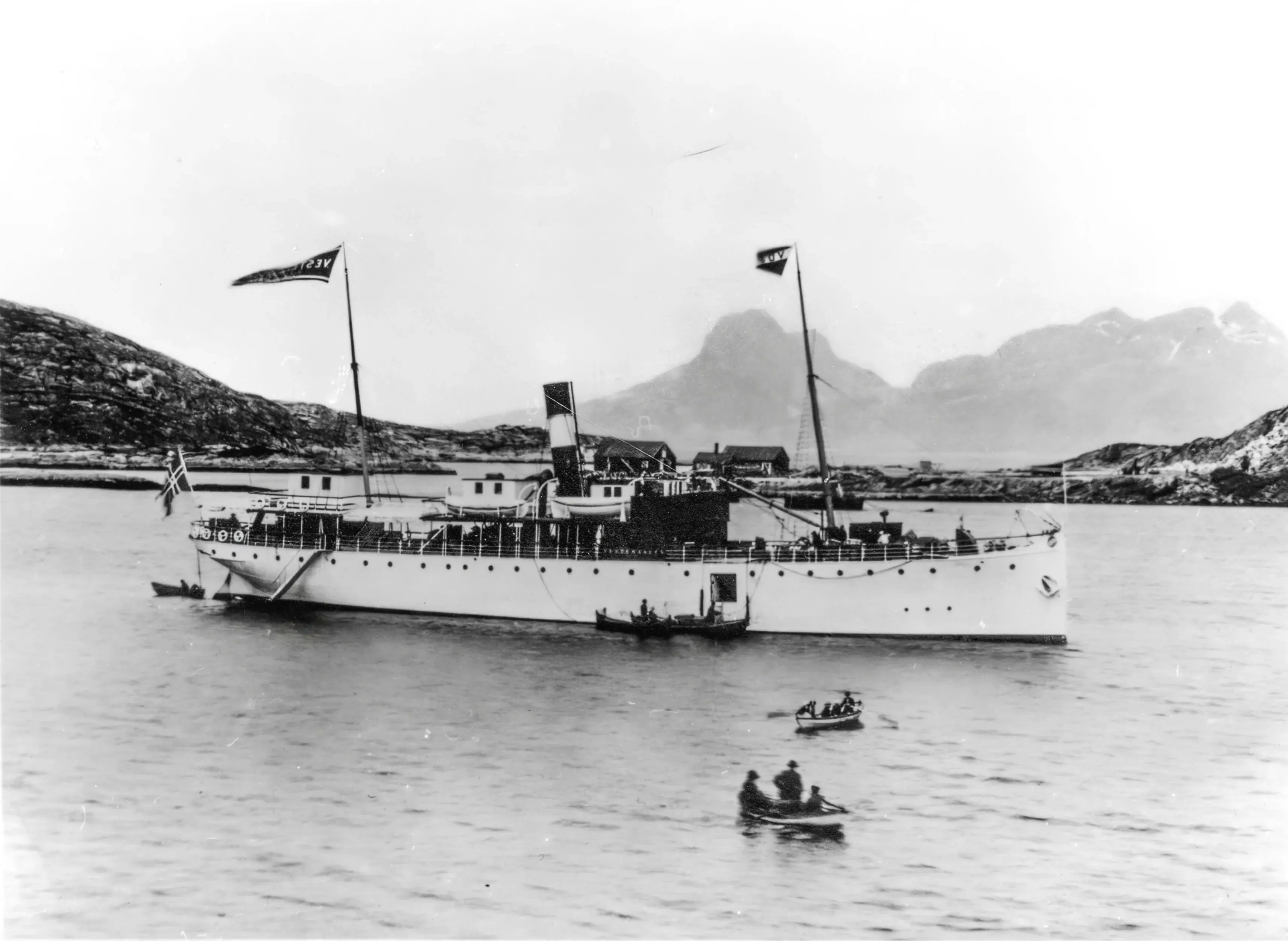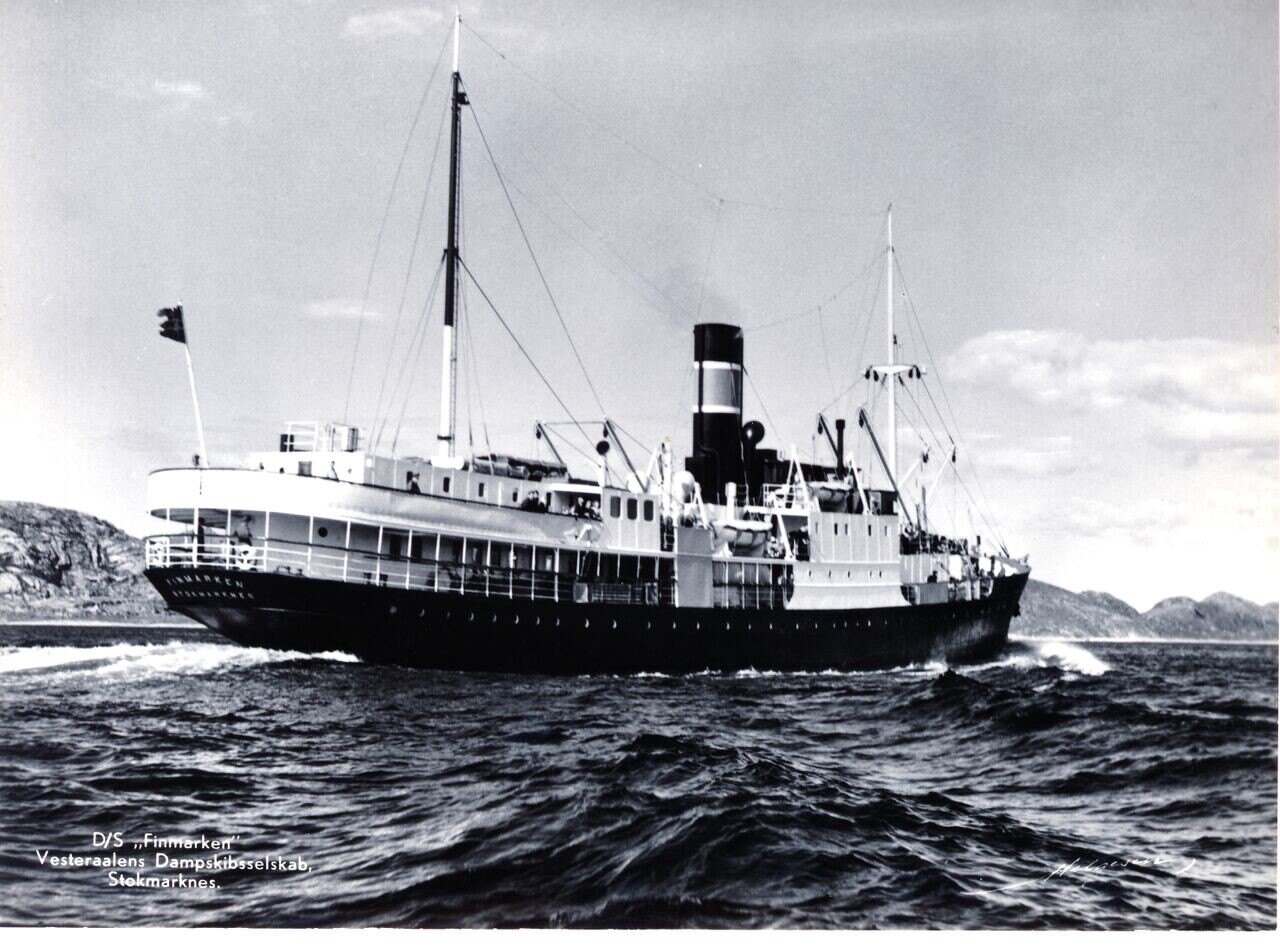The Forgotten History Behind the Origin of the Coastal Route
Captain Richard With's pioneering Coastal Express voyage is a familiar tale in Norway. However, few realize that the 130-year-old narrative about the Norwegian coastal route traces its roots back to a salt-carrying vessel in the Eidsfjord in 1880.
"It's a dog's life lying here salting herring without getting rid of it," said Richard With. District doctor Jakob Georg Thode nodded, but before he could reply, With continued, "There must be a better way; instead of zigzagging with jekter (traditional Norwegian boats), we need steamships for towing and transporting herring." "Indeed, but the funds, With! How will they be raised?"
"People need to unite to purchase a steamship, but to persuade them, I require assistance. And you can provide that, doctor!"
"I'll do my utmost, but first, consult William Hals in Stokmarknes and lawyer Lumholtz too; he might be invaluable when transacting. If we establish a joint-stock company, his presence on the board could be beneficial."


Such were the words exchanged when Richard With and district doctor Thode met aboard a salting vessel in Sildpollen in the Eidsfjord in the autumn of 1880. The Eidsfjord was one of the best herring fjords in the north of Norway, and that season, the catch surpassed all expectations. "When the fjord was bustling, it resembled the most prominent port cities," an account from that time describes. Small and large steamships ventured into the Eidsfjord to load herring. Jekter and jakter (traditional sailboats) also played their part in transportation, and the steamships were particularly busy. Yet, as Richard With observed – the herring accumulated.
(The paragraphs above are excerpts from the book “På nordnorsk kjøl – Vesteraalens Dampskibsselskab gjennom 75 år, authored by Reidar Stavseth)
The Great Herring Fishery
The well-being of the hardworking fishermen and ship crews in the Eidsfjord was under threat. The situation worsened to such an extent that when a typhus outbreak occurred, district doctor Jakob Thode had to establish a field hospital on Sildepollen – an island in the Eidsfjord and the primary docking area for fish and herring intended for salting.
"In the most prosperous herring fishing years in the Eidsfjord, the Sildpollen had Norway's most active telegraph station. This showcases the vast number of mariners arriving. They travelled from distant regions to benefit from the herring bounty in the Eidsfjord," says Per Rydheim during our meeting on board Havila Capella one August morning.
He usually works as a chief engineer on the coastal route ship, but in his free time, he enjoys playing the role of a hobby historian.
This particular tale – of the moment Richard With had a profound realization during an Eidsfjord visit one autumn day in 1880 – would become pivotal for Norway initiating a coastal express route 13 years later.
"You see, The funding for the first coastal voyage express ship primarily originated from the transport of herring from Eidsfjorden, supplemented by other cargo and eventually mail," Rydheim explains.
But to resume our story – the herring continued to accumulate in Sildpollen...
A Good Idea
"Richard With's concept was to establish a steamship company, which would feature a ship capable of loading herring and also towing both jakter and jekter for swifter transit to Bergen. District doctor Thode was so impressed that he advised With to discuss it with merchant William Hals in Stokmarknes, which he did," says Rydheim. (
A few months later, just after New Year in 1881, Richard With personally rowed around the islands of Vesterålen and Lofoten promoting a share offer of a hundred Norwegian kroner. He collected 17,500 NOK. It wasn't sufficient for the vessel he had envisaged; the steamship "Arendal", which had regularly operated in Lofoten and boasted a substantial cargo capacity for its time. It was then moored in Ålesund, which With had personally inspected.
"He was short by 2,500 NOK for the purchase, so he telegraphed merchant William Hals and lawyer Lumholtz in Stokmarknes," Rydheim continues. The duo had a trusted contact, Olaus Lockert, whom they simply approached for support. He consented to loan Richard With 10,000 NOK – securing the deal with nothing more than a standard receipt.
Grew Quickly
"Captain Richard With procured the DS 'Arendal' and had it navigated to Vesterålen in the summer of 1881. Then, on 10 November that year, the Vesteraalens Steamship Company (VDS) was formally established and initiated its board. Richard With was officially appointed on 14 January 1882," Rydheim recounts.
The DS "Arendal" was rechristened "Vesteraalen". Following a brief shipyard stay, it began its service between the Eidsfjord and Bergen, engaging in herring transport and towing traditional sailboats. Gradually, the route extended to the island of Senja, near Tromsø and operated throughout the year.

The steamship 'Arendal' was acquired by Richard With and renamed 'Vesteraalen'. (The image has undergone digital restoration and colourisation.)
"By 1884, Captain With had commissioned a new vessel, 'Lofoten', which commenced the same route. By that time, VDS owned two ships and began to rival both the Bergen Steamship Company and another prominent steamship company, Nordenfjeldske," details Rydheim.
Merely 12 years after the establishment of the new steamship company in Vesterålen, Richard With secured a tender for a coastal express route between Trondheim and Hammerfest in the summer and Trondheim to Tromsø in the winter. "This route was envisioned by steamship consultant August Kriegsmann Gran. He wanted the Trondheim to Svolvær transit to be completed in 34 hours, and captain Richard With comfortably achieved this," concludes Per Rydheim.

Steamship Consultant August Kriegsmann Gran. (The image has been digitally restored)
Read the story about "The Birth of the Coastal Express”
Over the 130 years of its existence, the Norwegian coastal express route has seen numerous expansions, encompassing ports, shipping companies, and vessels. Today, it's officially named Kystruten Bergen-Kirkenes (Coastal Route Bergen-Kirkenes) and is serviced by two shipping companies, with Havila Voyages as the most recent addition, boasting four modern, and sustainable ships.
Text: Havila Voyages/Josefine Spiro
Video of Sailing into the Eidsfjord!
In September 2023, Havila Voyages took eight detours into the Eidsfjord in Vesterålen. At this picturesque location, tourists and local history enthusiasts learned about the herring fisheries that once inspired Richard With to establish his own steamship company, leading to the inception of the first coastal express.
Check out the video!



